#pastel on paper
Explore tagged Tumblr posts
Text

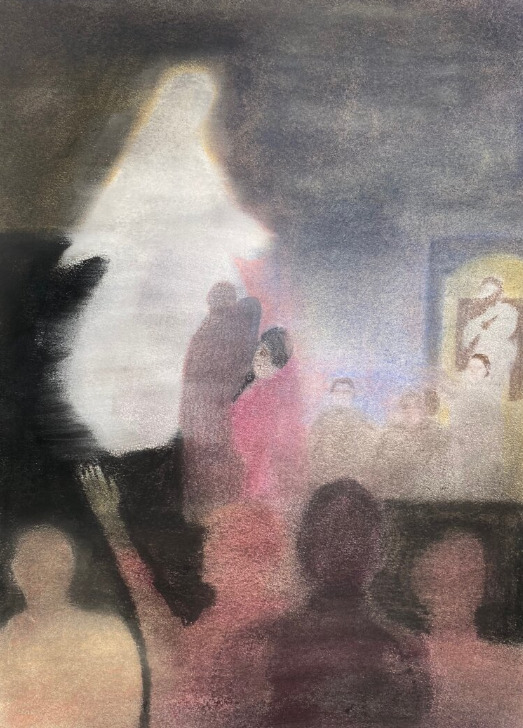
Francisca Feuerhake
5K notes
·
View notes
Text

Lucien Lévy-Dhurmer (1865–1953) - La Sorcière, 1897
pastel on paper
© Paris, Musée d’Orsay
#lucien lévy dhurmer#la sorcière#the sorceress#the witch#19th century art#19th century#fin-de-siècle symbolism#art nouveau#witches#witchcraft#occult#pastel on paper#art#painting#illustration
240 notes
·
View notes
Text

Lindsey harald wong. Pastels on paper
#abstract painting#abstract art#abstract#drawing#workonpaper#painting#art#abstract expressionism#abstract drawing#colors#monochrome#contemporary#modern art#pastel on paper#Lindsey harald wong#green
653 notes
·
View notes
Text

Seated Bather, 1899 Edgar Degas
#edgar degas#impressionism#bath#bathing#1890s#19th century art#pastel on paper#art#artwork#curators on tumblr
73 notes
·
View notes
Text
Oil pastel sketches i've been doing between classes <3



#greek mythology#epic the musical#greek tumblr#greek myths#greek posts#greek myth art#greek gods#ancient greece#ancient rome#achilles#demeter#hera#alexander the great#oil painting#pastel oil#pastel on paper#sketch
67 notes
·
View notes
Text
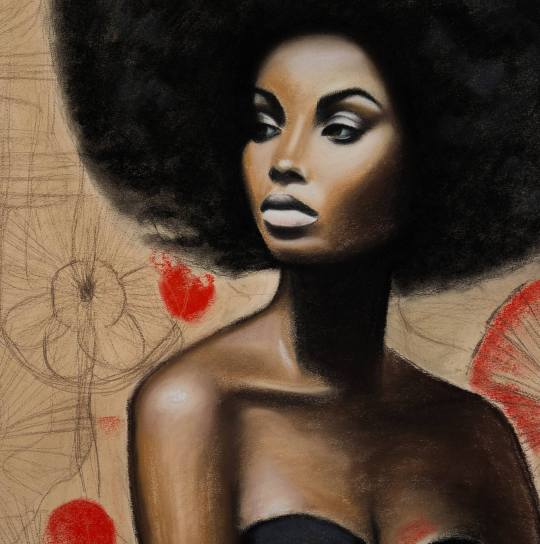
Red Flowers by Inna Medvedeva
408 notes
·
View notes
Photo

Nathalie Venant, “Nuage” 2023, pastel on paper. b. 1960, Saint Doulchard, France.
#nathalie venant#nuage#2023#pastel on paper#painting#art#french artist#landscape#blue#heaven#violet#white#clouds#moon light#moon#stars#forest#night
91 notes
·
View notes
Text

The Detective, József Rippl-Rónai, 1923
#art#art history#József Rippl-Rónai#portrait#pastel#pastel on paper#pastel portrait#Hungarian art#20th century art#modern art#Rippl-Rónai Museum
74 notes
·
View notes
Text
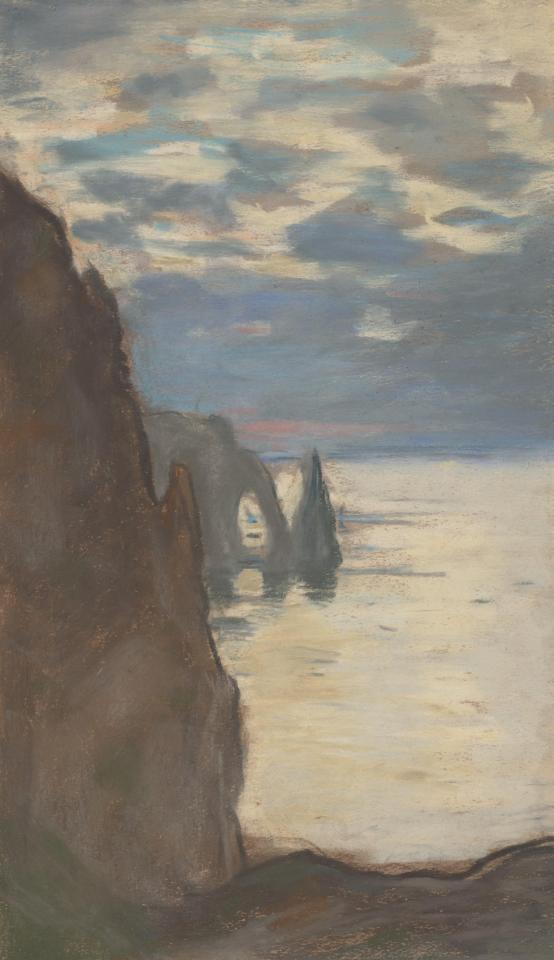
Etretat, the Needle Rock and Porte d'Aval, the Cap d'Antifer (Cliffs at Etretat)
Artist: Claude Monet (French, 1840-1926)
Date: About 1885
Medium: Pastel on paper
Collection: National Galleries of Scotland, Edinburgh, Scotland
Description
Monet produced this work on the Normandy coast at Etretat, famous for its unusual rock formations such the Porte d’Aval (shown here), the Porte d’Amont and the Manneporte. Brought up in nearby Le Havre, he was familiar from childhood with these dramatic limestone cliffs and returned to the area at various times over his long career. Etretat was fast developing as a tourist site, but this picture was produced at a time when Monet had abandoned modern, urban subjects in order to focus on natural phenomena and repeated motifs executed on the spot. He produced several versions of the Porte d’Aval, mostly in oil, seen from different viewpoints. Drawn from a high view point, the scene has a stark simplicity, the use of muted tones of blue, cream and brown signal the onset of evening.
#seascape#pastel on paper#etretat#france#impressionism#french culture#cliffs#needle rock#normandy coast#french art#porte d'aval#cliffs of etretat#sea#cloudy horizon#artwork#fine art#claude monet#french impressionist painter#european art#19th century painting#national galleries of scotland
20 notes
·
View notes
Text

Lilla Cabot Perry (1848-1933) "Japanese boy with headband" (1901) Pastel on paper Impressionism
#drawing#art#artwork#male portrait#portrait of a boy#lilla cabot perry#pastel on paper#pastel drawing#drawings#fine art#japanese#smile#smiling#blue#clothing#clothes#early 1900s#early 20th century#a queue work of art
105 notes
·
View notes
Text

Jinhee Lee (2022)
#art#artwork#contemporary art#colors#pastel on paper#colored pencil#illustrator#illustration#korean artist
141 notes
·
View notes
Text

Waiting (1882) 🎨 Edgar Degas 🏛️ The J. Paul Getty Museum 📍 Los Angeles, United States
A young ballet dancer bends forward to massage her foot, while her somberly dressed older companion sits silently beside her on a bench. They appear to be waiting, perhaps for an audition or its outcome. The two figures are a study in contrasts: The athletic dancer dressed in a dazzling costume reflects the glamour and artifice of the stage, while the shabbily dressed, bent figure represents the drabness of everyday life.
Edgar Degas painted modern life; his subjects, including laundresses, milliners, nightclub singers, horse races, and the ballet, reflected contemporary Parisian occupations and diversions. From the 1860s onward, Degas frequented the Paris Opéra, where he made numerous studies of performances, rehearsals, and backstage scenes. Later, he would refine and combine these motifs in his studio, in exercises of daring technical skill and compelling psychological subtlety. Here he demonstrated his complete mastery of the pastel technique. Delicately blended strokes are combined with bold hatching and emphatic slashes; pink, blue, and creamy tones describe the dancer in contrast to the dark, severe form of the older woman.
#Waiting#L'attente#Edgar Degas#pastel#pastel on paper#1882#Impressionism#Modern art#ballet#The J. Paul Getty Museum#Los Angeles#United States#french#art#artwork#art history
22 notes
·
View notes
Text
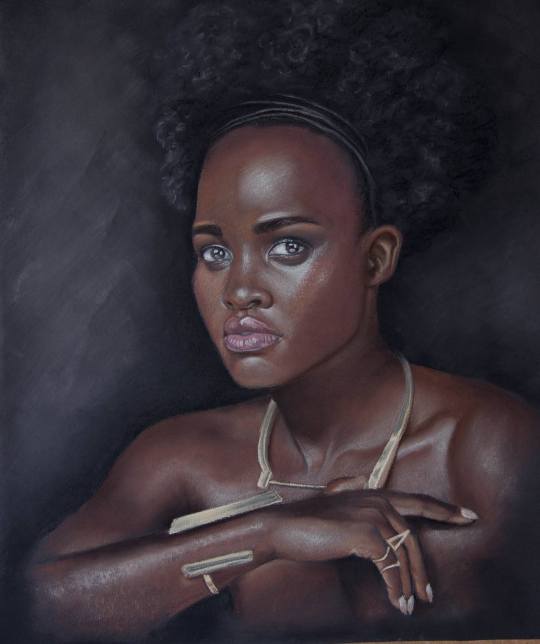
Lupita by Inna Medvedeva
260 notes
·
View notes
Text

Orpheus
Artist: Odilon Redon (French, 1840–1916)
Date: ca. 1903-1910
Medium: Pastel on brown paper
Collection: The Cleveland Museum of Art, Cleveland, Ohio, United States
Description
Drawn in vivid layers of pastel crayon, this work depicts the head of the poet and musician Orpheus. The story of the god of music, whose music carried on after his death through his lyre and head, fascinated Redon, who related to Orpheus's dedication to his art. The subject also aligned with Redon's broader interest in dreams and spirituality around this time and he represented Orpheus several times throughout his career, in various media. Here, the god's head floats as if in stasis while Mount Parnassus - the home of Apollo and the Muses - soars from behind.
#orpheus#french symbolism#artwork#ancient greek poet#greek musician#lyre#head#floating#mount parnassus#painting#pastel on paper#fine art#art and literature#french culture#french art#odilon redon#french painter#french symbolist painter#20th century painting#european art#cleveland museum of art
6 notes
·
View notes
Text
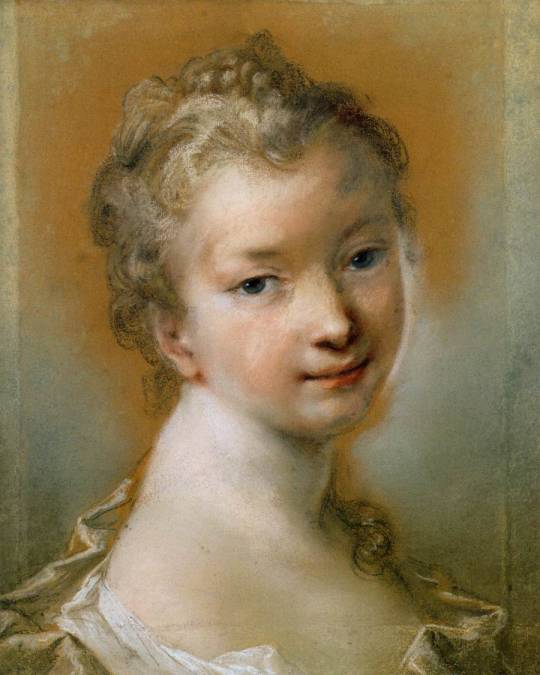
Portrait of a Young Girl, Rosalba Carriera (1675-1757)
#art#art history#Rosalba Carriera#female artists#portrait#drawing#pastel#pastel on paper#Rococo#Italian art#18th century art#Louvre#Louvre Museum#Musee du Louvre
72 notes
·
View notes
Text

The Yellow Sail
Artist: Odilon Redon (French, 1840-1916)
Date: c. 1905
Medium: Pastel on paper
Collection: Indianapolis Museum of Art, Indianapolis, Indiana, United States
Description
Symbolist artist Odilon Redon created images that suggest mental states or spiritual realms rather than imitations of the visible world. While Redon was fascinated by recent scientific discoveries relating to the sea, this glowing pastel may have a more mystical inspiration. Does it refer to the final journey of the soul, symbolized by the gems, across the divide between life and death? The two women could be spiritual presences who attend the soul as guardian figures.
Redon's art was part of a broader European current that included Sigmund Freud's analysis of dreams and the founding of modern psychology.
#genre art#symbolism#odilon redon#european#sail boat#women#seascape#french painter#pastel on paper#yellow sail#clouds#painting#french culture#pastel#fine art#sailing boat#glow#mystical#journey#gems
42 notes
·
View notes